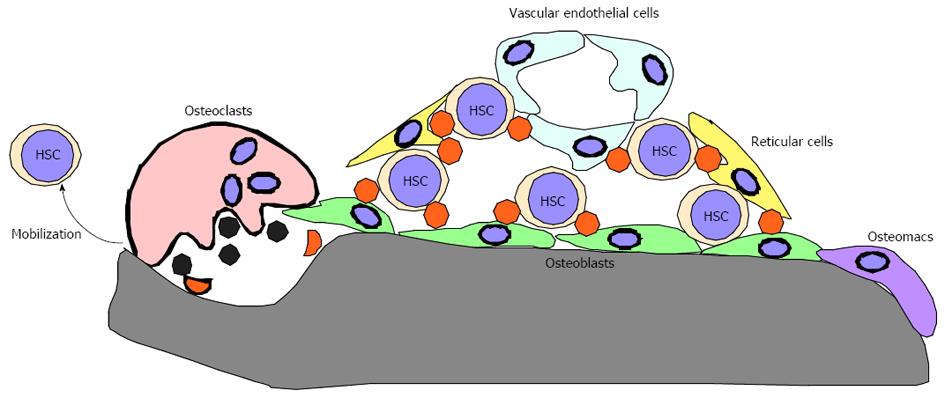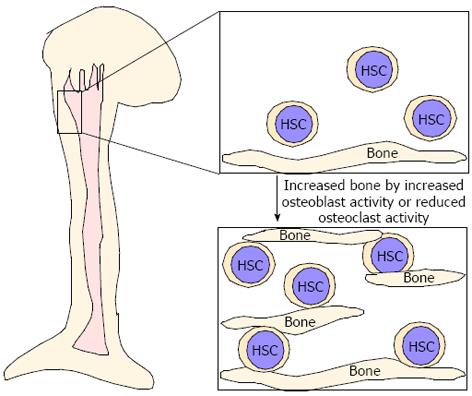Copyright
©2013 Baishideng Publishing Group Co.
World J Orthop. Oct 18, 2013; 4(4): 198-206
Published online Oct 18, 2013. doi: 10.5312/wjo.v4.i4.198
Published online Oct 18, 2013. doi: 10.5312/wjo.v4.i4.198
Figure 1 Components of bone marrow niches.
Bone marrow niches are composed of cell types such as osteoblasts, reticular cells and vascular endothelial cells and factors expressed by these cells; HSC: Hematopoietic stem cell.
Figure 2 Splenectomy strategy.
Splenectomy or sham surgery was performed on op/op and control mice. Seven days later, mice were injected with 250 μg/kg per day granulocyte colony-stimulating factor daily for 5 d and hematopoietic stem cell mobilization to peripheral blood was analyzed using flow cytometry and colony-forming assays. G-CSF: Granulocyte colony-stimulating factor.
Figure 3 Increased bone mass is associated with an increased hematopoietic stem cell pool.
Hematopoietic stem cells (HSC) are located in bone marrow cavities with surrounding niche cells. Increased bone mass due to either increased osteoblast activity or reduced osteoclast activity likely contributes to HSC expansion.
- Citation: Miyamoto T. Role of osteoclasts in regulating hematopoietic stem and progenitor cells. World J Orthop 2013; 4(4): 198-206
- URL: https://www.wjgnet.com/2218-5836/full/v4/i4/198.htm
- DOI: https://dx.doi.org/10.5312/wjo.v4.i4.198











